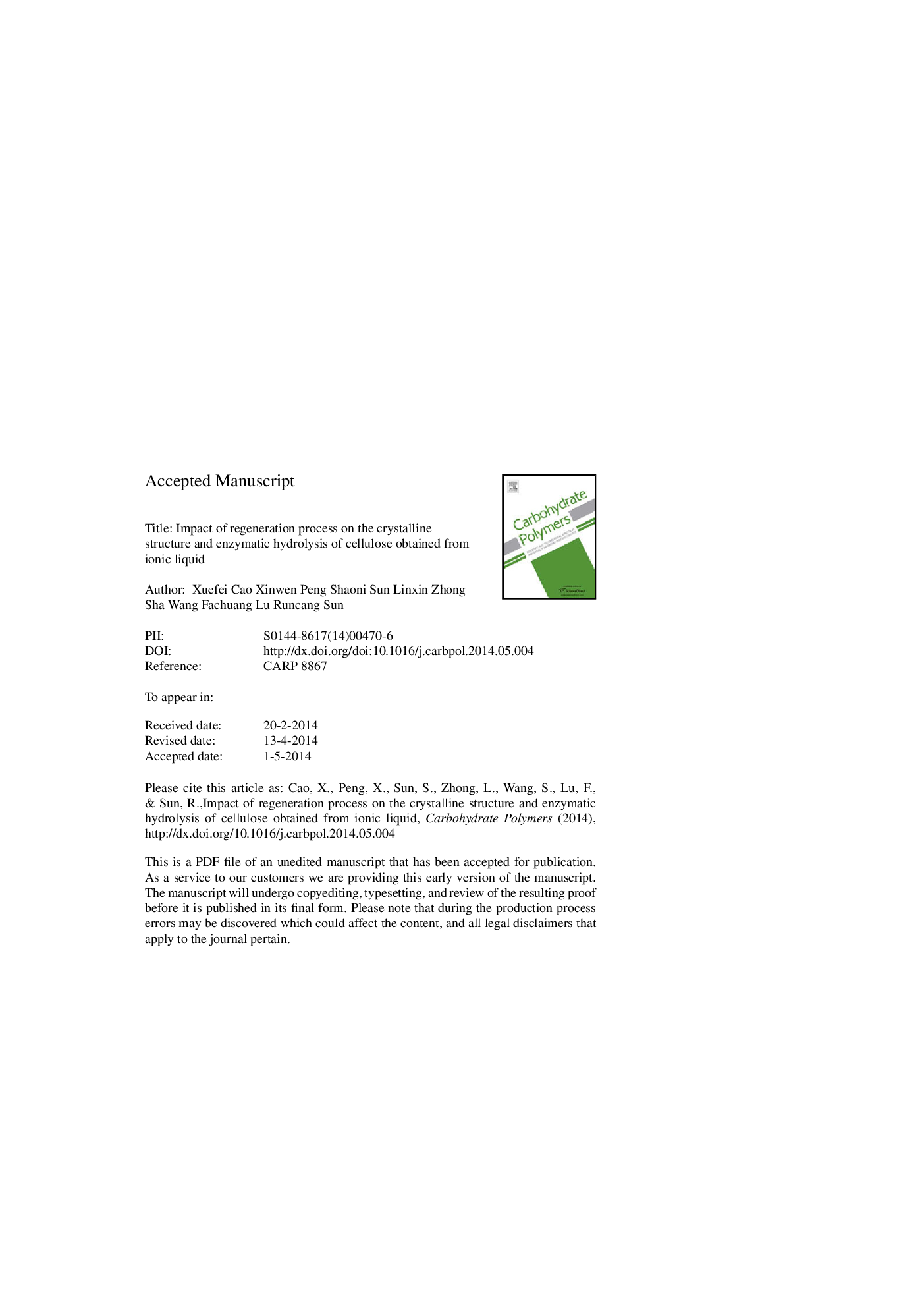| Article ID | Journal | Published Year | Pages | File Type |
|---|---|---|---|---|
| 7791581 | Carbohydrate Polymers | 2014 | 15 Pages |
Abstract
The present study investigated the impact of regeneration process on the crystalline structure and enzymatic hydrolysis behaviors of microcrystalline cellulose (MCC) regenerated from ionic liquid 1-butyl-3-methylimidazolium chloride. The crystalline structures of these regenerated samples were analyzed by X-ray diffraction. Results suggested that almost amorphous cellulose was obtained by regenerating MCC in acetone (DRC-a), while partial cellulose II structure could be found in these regenerated samples from water and ethanol. Additionally, the enzymatic hydrolysis behaviors of MCC and its regenerated samples were comparatively studied. Results showed that above 90% of cellulose could be converted into glucose within 4Â h for DRC-a and regenerated cellulose without drying (WRC-w) as compared to that of MCC (9.7%). Therefore, the regeneration process could significantly influence the crystallinity and digestibility of cellulose.
Related Topics
Physical Sciences and Engineering
Chemistry
Organic Chemistry
Authors
Xuefei Cao, Xinwen Peng, Shaoni Sun, Linxin Zhong, Sha Wang, Fachuang Lu, Runcang Sun,
